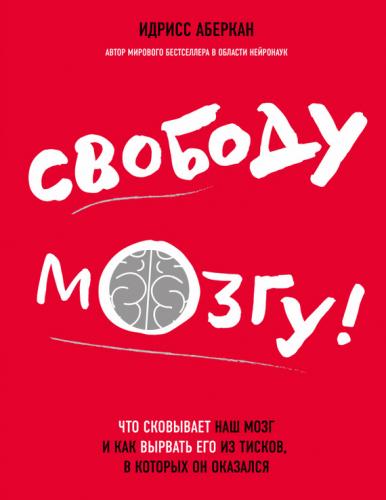45
Опытный дирижер оркестра может, например, моментально выделить ноту на полтона выше (прим. авт.).
46
Snyder, A., «Explaining and inducing savant skills: privileged access to lower level, less-processed information», Philosophical Transactions of the Royal Society of London B: Biological Sciences (2009), 364, 1399–1405 (прим. авт.).
47
От savant – «ученый» (прим. ред.).
48
Miller, B. L., Cummings, J., Mishkin, F§ , Boone, K., Prince F., Ponton, M. et Cotman, C. «Emergence of artistic talent in frontotemporal dementia», Neurology (1998) 51, 978–982 (прим. авт.).
49
Как, например, язык или умение играть на пианино (прим. авт.).
50
Белое вещество – самый известный проводник, связывающий нейроны (прим. авт.).
51
Аргумент физика Роджера Пенроуза в пользу квантового подхода, вероятно свойственного человеческому мозгу, носит название Orch OR от Orchestraded Objective Reduction. См. также: Hagan, S., Hameroff, S.R. et Tuszynski, J.A., «Quantum computation in brain microtubules: Decoherence and biological feasibility», Physical Review E (2002), 65, 61901; Hameroff, S., «Quantum computation in brain microtubules? The Penrose-Hameroff «Orch OR» model of consciousness», Philosophical Transactions of the Royal Society of London A: Mathematical Physical and Engineering Sciences (1998), 1869–1895; Hameroff, S., «Consciousness, neurobiology and quantum mechanics: The case for a connection in The Emerging Physics of Consciousness», Springer, 2006, p. 193–253; Litt, A., Kroon, F. W. Weinstein, S. et Thagard, P. «Is the brain a quantum computer?» Cognitive Science (2006), 30, 593–603; Reuell, P., «Quantum computing, no cooling required», Harvard Gazette, 2012; da Rocha, A.F., Massad, E. et Pereira, A., «The brain: fuzzy arithmetic to quantum computing», Springer Science & Business Media, 2005 (прим. авт.).
52
Стимулирование головного мозга с помощью магнитных импульсов (прим. ред.).
53
J. Churchill, «Pharmaceutical Journal: A Weekly Record of Pharmacy and Allied Sciences», R.P.S. of G Angleterre, 1858, p. 223; Timbs, J., Vincent, C.W. et Mason, J. The Yearbook of facts in Science and Art, Simpkin and Marshall, and Company, 1858, p. 151; Wesleyan-Methodist Magazine, vol. 3, 1859, p. 1040; Finger, S et Piccolino, M. «The Shocking History of Electric Fiches: From Ancient Epochs to the Birth of Modern Neurophysioilogy», OUP USA, 2011 (прим. авт.).
54
Blumberg, E.J., Foroughi, C.K., Scheldrup, M.R., Peterson, M.S., Boehm-Davis, D.A. et Parasuraman, R. «Reducing the descriptive effects of interruptions with noninvasive brain stimulation», Human Factors: The Journal of the Human factors and Ergonomics Society (2014), 0018720814565189 (прим. авт.).
55
Parasuraman, R. Et McKinley, R.A., «Using noninvasive brain stimulation to accelerate learning and enhance human performance», Human Factors: The Journal of the Human Factors and Ergonomics Society (2014), 0018720814538815 (прим. авт.).
56
Scheldrup, M., Greenwood, P.M., McKendrick, R., Strohl, J., Bikson, M., Alam, M., McKinley, R.A. et Parasuraman, R., «Transcranial direct current stimulation facilitates cognitive multi-task performance differentially depending on anode location and subtask», 2014 (прим. авт.).
57
Способность делать несколько дел одновременно (прим. пер.).
58
Falcone, B., Coffman, B.A., Clark, V.P. et Parasuraman, R., «Transcranial direct current stimulation augments perceptual sensitivity and 24-hour retention in a complex threat detection task», PloS One 7 (2012), е 34993 (прим. авт.).
59
Nelson, J.T., McKinley, R.A., Golob, E.J., Warm, J.S. et Parasuraman, R., «Enhancing vigilance in operators with prefrontal cortex transcranial direct current stimulation (tDSC)», Neuroimage (2014), 85, 909–917 (прим. авт.).
60
См. главу «Нейроэргономика на службе экономики сознания», стр. 122, (прим. авт.).
61
Shibata, K., Watanabe, T., Sasaki, Y. et Kawato, M., «Perceptual learning incepted by decoded fMRI neurofeedback without stimulus presentation», Science (2011), 334, 1413–1415 (прим. авт.).
62
Choe, J., Coffman, B.A., Bergstedt, D.T., Ziegler, M.D. et Phillips, M.E., «Тranscranial direct current stimulation modulates neuronal activity and learning in pilot training», Frontiers in Human Neuroscience (2016), 10 (прим. авт.).
63
На английском языке его внушение выглядит еще более убедительно: «I’ve been thinking the wrong way» (прим. авт.).
64
На английском языке это выражение также выглядит более убедительно: «Do you know what’s good for you to take so you can just take that and feel okay?».
65
Браун лично отбирает испытуемых по их внушаемости, поэтому реальное соотношение явно намного меньше (прим. авт.).
66
Global neuronal workspace (прим. науч. ред.).
67
Метапознание – это
